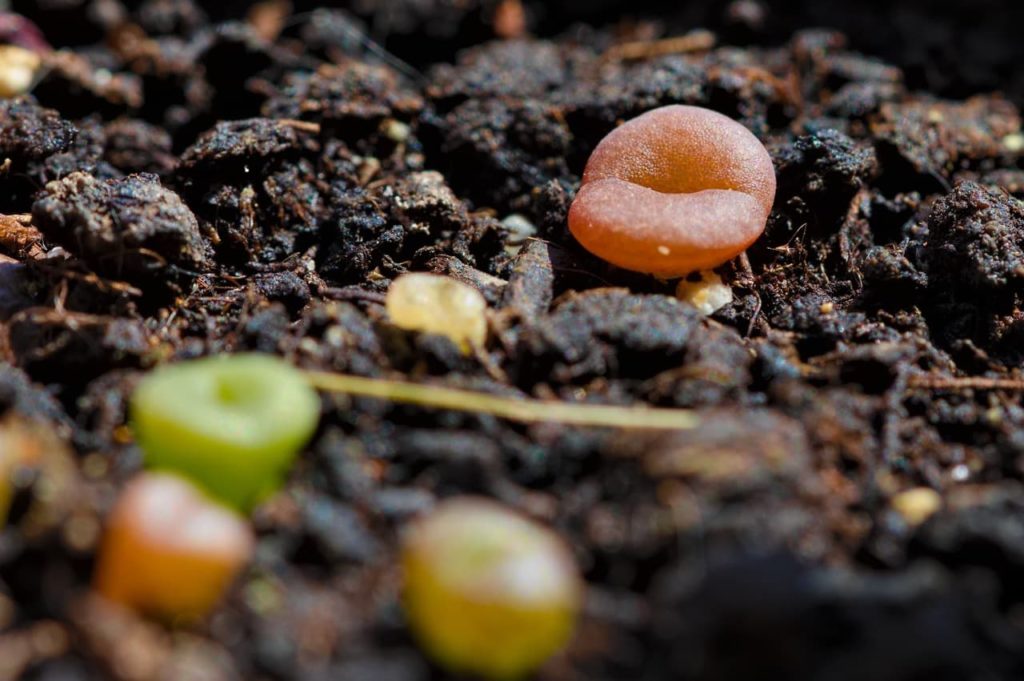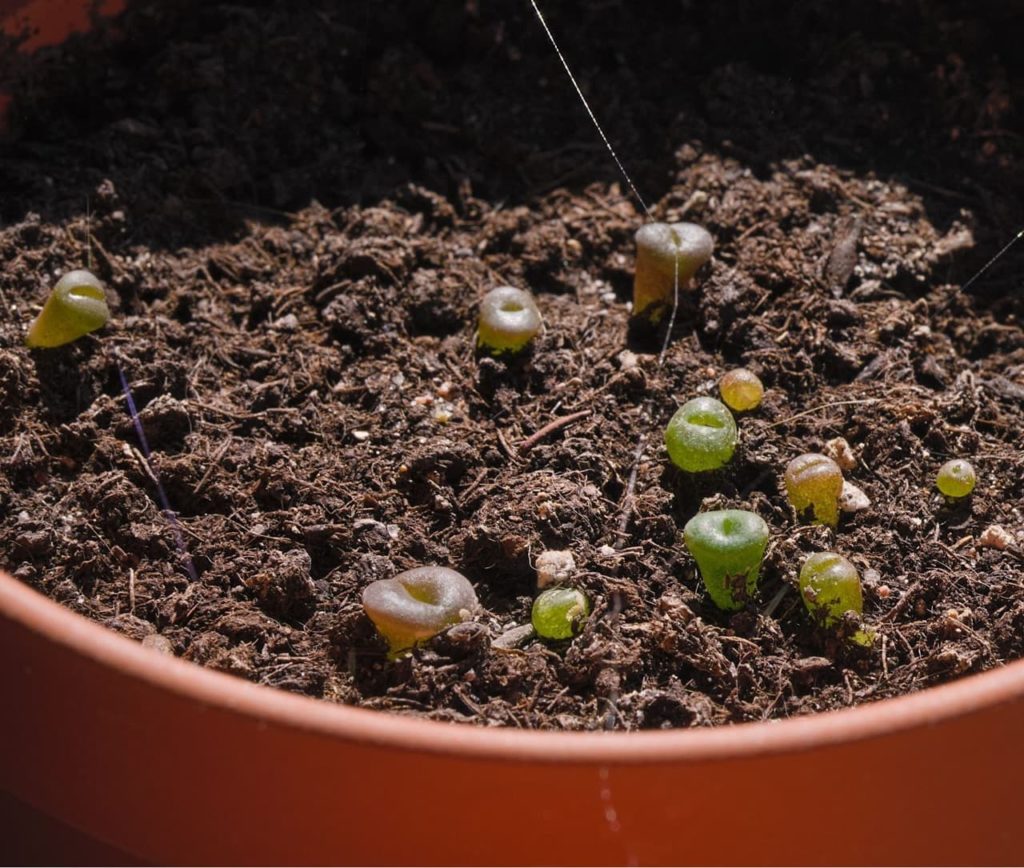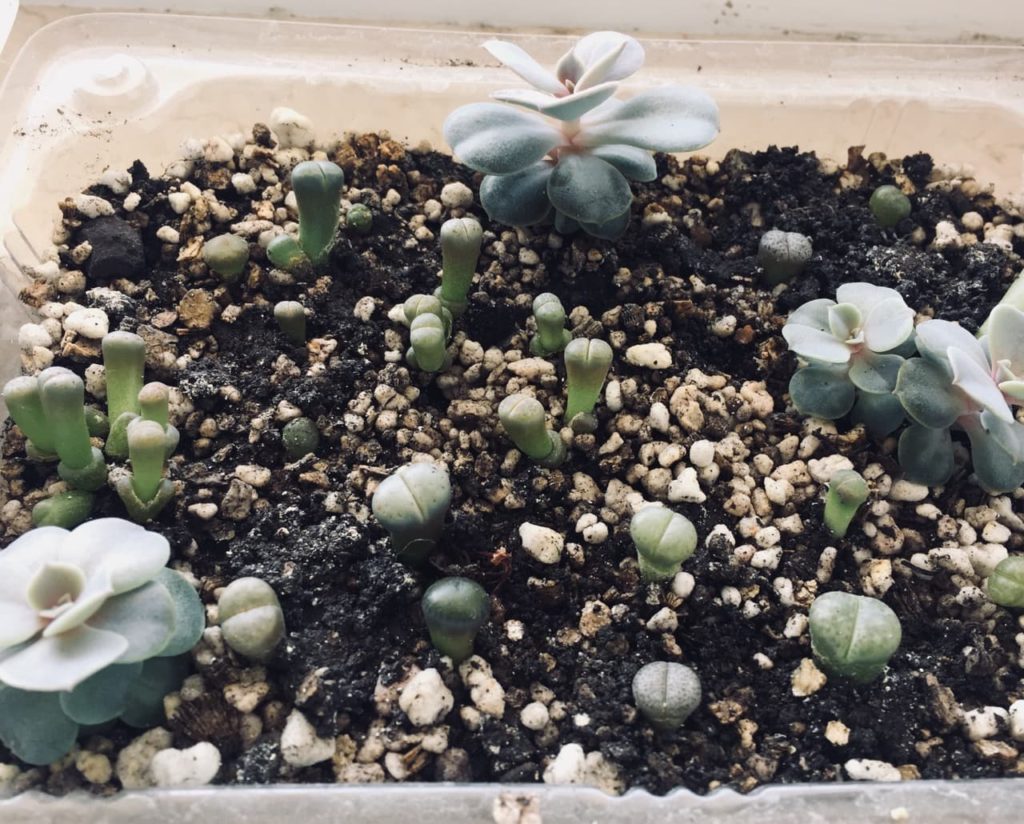SUCCULENTS > LITHOPS > SOWING
IN THIS GUIDE
LITHOPS GUIDES

Sowing
If you care succulent but do n’t care for spine , then Lithops is for you .
This plant looks like a duet of little ellipse stones set close together ; the vividness is ordinarily gray , brownish or fleeceable , with some texturing or a individual daub .

It is no surprise then , that these plants are known as ‘ surviving Stones ’ .
These plants have midget seeded player that are very much like uncouth Baroness Dudevant , so you will be sow grit - same seeds in a flaxen metier to grow small gemstone .
you’re able to enjoy the subprogram of growing Lithops from seed by follow these footmark :

Each level of this process is explicate in more depth below .
1) Find A Suitable Spot For Sowing
Just as some seeds need brightness to germinate and some need dark , Lithops seeds are fussy about the temperature they need to germinate , as well as the time of year .
Most smorgasbord of Lithops cum need a temperature between 19 - 24 ° C to germinate and are well seed during April .
witness a post by a windowpane where they will get plentiful indirect hopeful light for several hours , but no direct sunlight .

Otherwise , set up grow lights or any artificial light of the appropriate intensity .
2) Prepare The Pots & Growing Medium
It is unmanageable to sow in Lithops seminal fluid in a controlled mode as you commonly would and that ’s because they are so tiny .
Therefore , it is the best option to seed them in sess .
apply pocket-size 9 curium pots with drainage holes at the base .

succulent are best started and rooted in very well - draining coarse dirt that is not organically rich , and Lithops is no exception .
3) Sow The Seeds
First , damp the compost .
To sow tiny cum in a controlled manner , I take a rigid piece of composition board and sprinkle germ on it .
contain the composition board stiffly in one hand and with a board tongue in the other , carefully freestanding and push off seeds , scattering and spacing them over each pot .
gently swab down so that the seed are just lodged into the medium .
Do not essay to push the come in – they need light to germinate .
Take as many clear polythene sheets of the appropriate size as you have pots .
Make only two or three puncture in each sheet , and cover each locoweed to interlace in humidness .
Fasten the sheets around the edges of the pots ; you could utilize rubber bands or clips .
4) Wait For Your Living Stones To Germinate
Every morning remove the polythene sheet , spray the sensitive to moisten it well and replace the tabloid .
The mass medium should be kept continuously moist .
Repeat this step until you see the seedlings sprout up .
This may take anything from 4 - 20 daytime , depending on the species and condition .
5) Water The Emerging Seedlings
When you see seedling in a pot , remove the polythene sheet .
Continue continue the intermediate moist as before for two to three months .
Thereafter , reduce the relative frequency and intensity of lacrimation by dropping it down to every other day .
As the plants grow , go on to reduce the frequency of watering while keeping the intermediate moist .
“ Lithops seeds reply to seasonal moisture to develop but then enter a dry season , so stress to head off overwatering seedlings as this will cause them to molder , ” shares Colin Skelly , a Horticultural Consultant .
The following summertime the fresh , maturing living stones may be potted on .
When potting on , you may utilise a fairly more nutrient - full-bodied compost and then start to feed the plant .